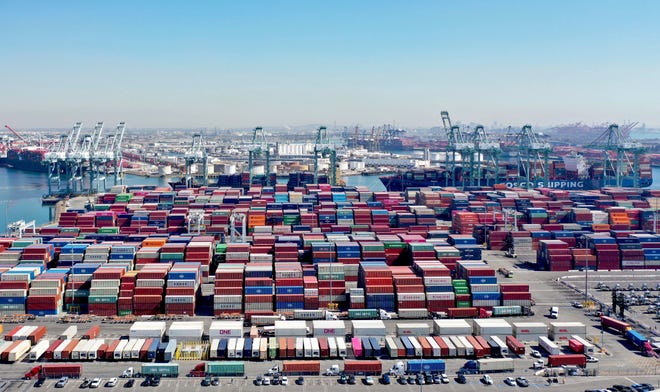Have you seen an increase in “Out of Stock” or “Supply Chain Issue” signage in public, or even inside Franklin High School? That would be due to the massive supply-chain issues going on worldwide, interrupting countries’ domestic and international concerns regarding the transport of commerce and other material. First, let’s explain what the term “supply chain” even means. Last year, near the start of the coronavirus pandemic you may remember talks about a “supply-chain” issue relating to PPE equipment and COVID-19 hospital supplies. A supply chain is practically a system that consists of multiple steps to get a “product or service” to a consumer, however, the steps involved within the chain can become interrupted due to a variety of factors. In this case across the duration of the last two years, the COVID-19 pandemic has caused nearly 750k deaths, it also has slowed economies on a worldwide scale, resulting in closed businesses, lost jobs, and vast supply-chain issues.
Supply-chain issues within the United States have also intensified due to the unprecedented unemployment rates caused by the pandemic. Employers and large corporations can’t find enough workers to work, thus businesses cannot run, trucks cannot be unloaded, and the economy we all know so well cannot function properly. Some corporations have even started raising base hourly wages for entry-level positions nationwide, nowadays entry-level fast-food workers can get paid up to fifteen dollars per hour, which is unheard of. Unfortunately, there is no one solution for supply chain issues. Some “temporary” solutions such as increased pay rates to incentivize those to work are strictly temporary and contribute to increased inflation (if every corporation begins doing so), which often leads to increased prices for daily items we consumers buy consistently.
According to Nick Vyas, an Executive Director for the Kendrick Global Supply Chain Management Institute at the University of Southern California, the current nationwide supply-chain dilemma may not be resolved for the next four to six months. The best thing we can do now is to “curb” our demand for goods, as continued demand with lesser supply will result in increased prices.

